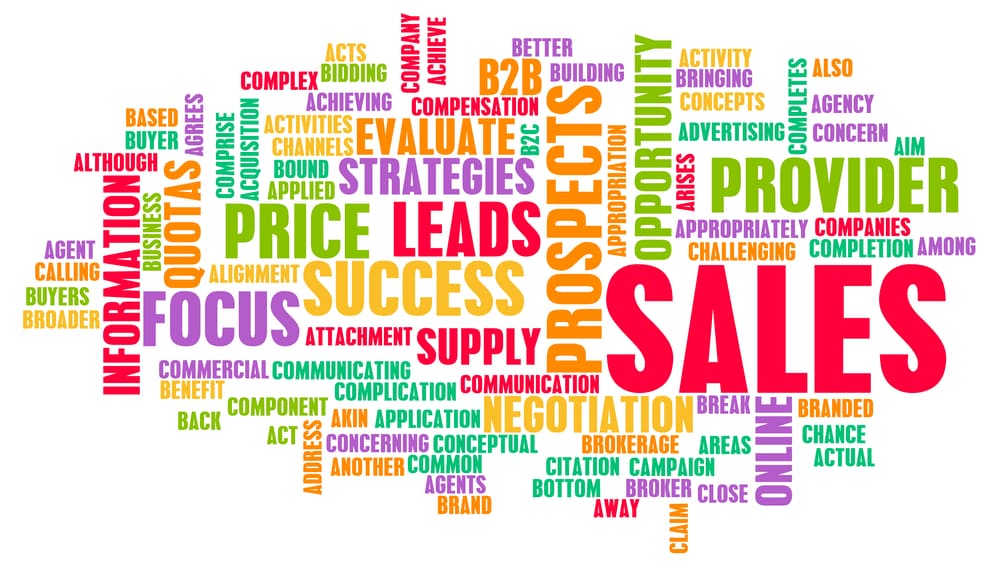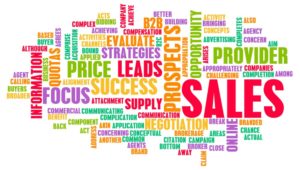Sales Process: How to Get a 10X Boost in Your Sales Results

If you want to start increasing your percentage of closed sales, one simple way to start would be to increase your awareness of sales lead management – the tightly-linked sequence of steps that your own particular sales process involves.
Use a well-linked sales process
Here is an example of what a well-linked sales lead management process might look like:
1. Research industry, company, decision-makers, and current business situation.
2. Send relevant article /tip sheet/ newsletter.
3. Send introductory letter and 2nd info item of value. Mention intention to call.
4. Call to set appointment.
5. First appointment – listen, share, verify and apply research from Step 1.
6. Mention follow-up and next step (another appointment, a free trial, assessment, phone call, etc) and set specific date.
7. Send follow-up item addressing specific issues from appointment learnings/ discoveries or needs assessment. Set meeting to discuss and customize.
8. Compile and send needs assessment findings.
9. Second appointment. Address questions, issues and ask for go/no-go decision.
10. Submit proposal with three options.
11. Third appointment to discuss proposal details, options, pricing, timing
12. Implementation decisions: payment terms, delivery schedule, etc.
The overall idea is to never move off the current step in your process without agreement on the next specific step. Make sure YOU remain in charge of the process; this is proactive selling.
 Get agreement and follow up with a reminder of the agreed-upon steps, meetings, dates, etc. The linkage of “agreement to agreement” also gets the prospect in the mindset of saying YES to you, which during the final agreement [closing] will be important.
Get agreement and follow up with a reminder of the agreed-upon steps, meetings, dates, etc. The linkage of “agreement to agreement” also gets the prospect in the mindset of saying YES to you, which during the final agreement [closing] will be important.
Use broad (and thus comfortable, non-confrontational) checkpoint questions such as “Does this make sense?” or “Would this make a difference to your situation?” or simply “What would you like me to do next?”
Set up a clearly defined, well-linked sales process, and then use lead management systems to automate, track, distribute, and report on the results. But using sales systems without an underlying consistent sales process is just sloppy selling.
Taking a lead from lukewarm to likely
Many sales professionals don’t know how to convert lukewarm prospects to high-probability leads. First, let’s define what a “lukewarm prospect” is.
A prospect can be considered lukewarm if:
* they’ve at least heard of your company name and product/service offering.
* they’ve expressed interest on a superficial level – stopped by your trade show booth and entered a drawing, clicked through to your website on an email blast, returned a postcard to request a free report.
Here are some strategies to move them from interest to action:
1. Send them something additional of value – a white paper, a report, a checklist, or a “how to select the best vendor” guide (which, of course, lists smart things to look for in ANY vendor they might choose… using criteria that your company also happens to score 100% on!)
2. Once they’ve responded to information, add an element of urgency which will convert the information “sale” to a product or service “sale.” Send a time sensitive offer, throw in extra services, special discounts, or use bundling and supersizing to offer extra value. Reference their earlier interest, and communicate a clear deadline for the added value offer.
3. Get personal. Use web conferencing, audio teleseminars, or even audio CD’s to add a personal dimension to the sales process. Sending out a 60-minute audio CD can be much more effective than sending another brochure, catalog, or sales letter. The personal connection of hearing a voice and the added intimacy of 1-on-1 communication can enhance a feeling of familiarity, trust, and connection that leads lukewarm prospects from casual interest to a sale!
Specific leads for specific needs
No matter what methods you use to generate leads (direct mail, email, website inquiries, trade shows, telephone inquiries, etc.) you need to keep in mind that you can’t CONVINCE anyone to buy anything. All your efforts should go toward FILTERING and SORTING.
Make the lead generation process itself interactive. ASK people what their specific needs are, what their timeframes are, and even whether or not they are currently looking for solutions such as yours. If they’re not in the market – and they TELL you so – you can’t force them to buy!
Focus on discovering a prospect’s REAL wants and needs. How do you do that? In your lead generation process, make sure you:
1. Get a conversation going. Look for what’s under the surface. On the phone, for example, you could use phrases like ‘Tell me more about that’ or ‘Why is that so?’ Look for the problem behind the problem!
2. Ask direct questions. Ask your prospects what’s most important to their businesses right now. On an email survey, for example, you could ask your list ‘What types of issues are you looking to solve in the next 6 months?’ Include a variety of choices, some that relate to your offerings, and some that don’t.
3. Follow up in writing. Send prospects letters or e-mails that highlight their major concerns, such as the three things they said were most important to them. This SPECIFIC kind of follow-up can make the difference between a sale and a lost opportunity.
4. Use multi-step marketing. Just like you’re unlikely to get married on your first visit to a singles bar, your prospect is unlikely to buy from you on your first communication. Lay out a value-rich process in which they can learn more, try a free sample, come to a briefing, or access some other low-risk method of getting to know your company’s offerings (e-news subscription, free white paper, information kit, etc.) This is a great strategy, because THESE leads are prequalified as interested and after getting several ‘samples’ of your value, they are pre-sold and ready to do business!
5. Target specialized markets. These days, specialized publications,
e-zines, websites, online forums, professional associations, events, and
conferences have mushroomed up everywhere! These all appeal to specific, targeted audiences, which increases your exposure to higher quality leads. Occupation-specific, special interest, or industry-specific channels can greatly increase the effectiveness of your lead generation activities. Want to reach pizza restaurant owners? Read Pizza Today! How about chicken farmers with over 100,000 birds? Read Poultry Tribune! Think of these specialized venues as a Geiger counter that will help you to find hot – no, radioactive – leads.
Once you’ve done all this – you’re now ready to ring the cash register!
Category : Sales


Great post. I will be sharing this with our trade show sales staff. Thank you so much!